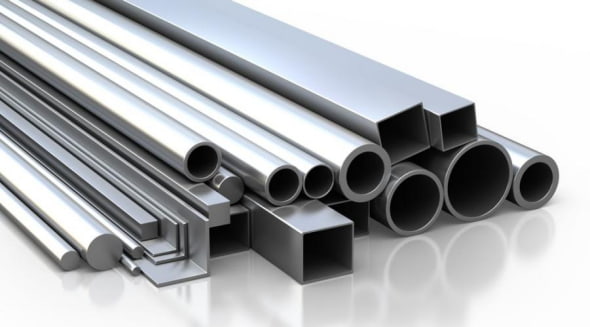Blog
From Strength to Flexibility: How Alloy Composition Impacts Steel Behavior

Steel, at its core, is an alloy composed of iron and carbon, with the carbon content typically less than 2% by weight. However, what differentiates one steel from another is not just this foundation, but the addition of other elements and the precision of their ratios. Beyond raw composition, how steel is processed—through heating, cooling, and mechanical work—significantly impacts its ultimate properties and behavior. Metallurgists have spent generations uncovering why certain combinations deliver the toughness needed for skyscrapers or the pliability necessary for springs.
The basic mixture can be transformed dramatically by tweaking the types and amounts of alloying elements. For instance, industrial fields rely on various specialty steels to meet demanding performance and safety standards. Engineers who require reliable performance under stress and flexibility during fabrication often turn to 4140 alloy steel. This particular alloy is known for striking a balance between strength, toughness, and versatility. Different industries, from aerospace to construction, select alloys with distinct proportions of elements, each of which fine-tunes steel’s capabilities for specific challenges such as resisting wear, enduring high temperatures, or combating corrosion.
The Role of Alloying Elements
Steel’s versatility stems from the addition of various alloying elements. For example, chromium enhances corrosion resistance, manganese increases hardness, nickel improves ductility, and molybdenum boosts strength at high temperatures. Even small adjustments in these elements can lead to significant changes in steel’s properties, allowing for customization based on specific applications. This field is continually evolving, with designers utilizing the latest research to refine steel at the microscopic level.
Balancing Strength and Flexibility
Steel’s performance involves balancing strength and ductility, often requiring a trade-off between the two. High carbon content enhances hardness but can lead to brittleness, increasing the risk of shattering under pressure. Metallurgists modify alloying elements such as nickel and vanadium to improve toughness, making steel suitable for applications like automotive parts and pipelines. Engineers design alloys for strength and flexibility, which is essential for structures like earthquake-resistant skyscrapers and bridges.
Alloy Steel In Everyday Use
Alloy steels are central to modern life, ensuring the durability and safety of infrastructure and products. In civil engineering, high-strength, low-alloy steels support bridges and skyscrapers, balancing load support with flexibility for weather or seismic changes. Public transit, freight trains, and playgrounds depend on these steels for safety, longevity, and ease of maintenance.
Stainless steels with chromium resist corrosion and contamination in specialized settings like hospitals and food services. Steel alloys for tools and sports gear offer resilience, lightness, and wear resistance, powering bicycle shocks and wind turbines.
Why Microstructure Matters
The microstructure of steel—like grains, phases, and precipitates formed during solidification and heat treatment controls key properties. Even with the same chemical composition, steels can have different mechanical traits due to cooling, rolling, or tempering variations. Heat treatments determine whether steel becomes soft pearlite, hard martensite, or a mix, each with unique characteristics. Advances in understanding and manipulating microstructure have driven significant progress in steel technology. Researchers now design superelastic and nano-grained steels with impressive strength and flexibility. These innovations set new standards for high-performance medical devices, robotics, and energy infrastructure by creating lighter, more robust, and adaptable materials.
Emerging Trends in Steel Development
Recent years have emphasized scalability, sustainability, and performance in steel manufacturing. Environmental concerns drive the development of alloys that are lightweight and durable. Nano-structured steels, engineered at the atomic level, help industries reduce waste and energy use while improving material performance. Efforts also focus on creating steel for extreme environments like aerospace—lightweight and fatigue-resistant—or for oil and gas, where high pressure and corrosion are standard. New alloys are designed for electric vehicles, renewable energy, and advanced construction, promoting efficiency, sustainability, and strength.
Blog
How Reliable Oil Delivery Services Keep Homes Running Smoothly

As temperatures drop and winter approaches, the role of a trustworthy oil delivery service becomes critical for families wanting to maintain a warm, comfortable home. Dependable fuel delivery means more than just convenience—it provides homeowners with peace of mind, knowing they will never be left unexpectedly without heat. This reliability can make all the difference during harsh weather or supply shortages. Discover more about COD fuel and how a reliable provider can make heating your home stress-free.
Access to a consistent oil supply is crucial not only for comfort but also for ensuring your home’s heating system remains in excellent working condition. If a delivery is missed or delayed, it can cause more than just inconvenience—it may lead to heating problems or system breakdowns, sometimes requiring costly repairs.
Beyond comfort, the predictability and transparency that come with dependable oil delivery services can simplify budgeting and daily routines. Whether you’re seeking automatic delivery or prefer to monitor your own needs, choosing a reputable provider should be part of every homeowner’s winter preparation plan.
To take a deeper look at the importance of reliable oil delivery, resourceful options for delivery schedules, and advances in the industry, continue reading for practical advice and expert insights. For further guidance, The New York Times’ review of heating fuels can be a valuable resource for understanding the available options.

Importance of Reliable Oil Delivery
Having a steady supply of heating oil is essential during the coldest months of the year. Interruptions or unexpected run-outs can cause disruption, discomfort, and even safety risks for families—especially during winter storms or extreme temperatures. Reliable oil delivery providers plan, monitor usage patterns, and anticipate peak periods to ensure their customers are always supplied with the fuel they need.
Additionally, dependable delivery supports the longevity and efficiency of your heating system. Frequent or severe shortages can introduce air into the system, potentially leading to malfunctions or damage. A reputable service keeps these risks at bay, ensuring your equipment functions properly and reducing the need for emergency repairs.
Automatic vs. Will-Call Delivery
When arranging for home heating oil, homeowners generally choose between two types of delivery schedules:
- Automatic Delivery: With this service, the provider tracks your fuel usage and weather patterns to schedule deliveries automatically. This eliminates the need for monitoring tank levels, ensuring you won’t run out during critical times. It’s a set-it-and-forget-it solution, ideal for busy families.
- Will-Call Delivery: This method gives you control—you monitor your own oil levels and contact the provider when you need more fuel. While this offers flexibility and may suit those who use their heating system sporadically, it also demands attention and careful planning, especially in colder months.
If you’re undecided about which option works for you, reading up on how automatic delivery compares to will-call services from trusted publications can be a great starting point.
Technological Advancements in Delivery Services
Modern oil delivery services utilize innovative technology to enhance both accuracy and reliability. Smart tank monitors provide real-time updates on fuel levels, eliminating the guesswork and enabling providers to forecast demand and schedule timely deliveries. These technologies help reduce the risk of unexpected shutdowns and enable precise, efficient refueling—even during high-demand periods.
Additionally, route optimization and GPS navigation enable drivers to deliver oil more quickly and efficiently, regardless of changing road or weather conditions. These advancements not only enhance customer satisfaction but also facilitate more effective fuel resource management and contribute to the provider’s overall reliability.
Choosing the Right Oil Delivery Service
Selecting a reputable provider is crucial for ensuring your home remains warm throughout the winter. It’s important to consider:
- Reliability and Reputation: Look for reviews and testimonials highlighting the provider’s consistency and promptness.
- Transparent Pricing: Avoid providers with hidden fees by asking for clear explanations of their rates and policies.
- Customer Support: Access to knowledgeable, responsive staff can be critical if you ever face emergencies or require last-minute adjustments to your delivery schedule.
Consulting consumer resources is a helpful way to evaluate potential businesses before making a decision.
Preparing Your Home for Safe Delivery
To facilitate a safe and seamless delivery process, ensure driveways and walkways are clear of snow and ice. The path to your oil tank must also be accessible for service personnel, especially in winter conditions. Regular tank and heating system maintenance can prevent operational issues and keep your system running efficiently during refueling.
Preparation is about more than convenience—it also ensures the safety of your home, your family, and the professionals delivering your fuel.
Budgeting and Payment Plans
Many oil delivery companies offer a variety of payment and budget programs designed to reduce the financial burden of heating through the colder months. Budget plans often spread the cost of heating oil evenly over the year, making monthly payments predictable. Pre-pay plans enable homeowners to secure a fixed price before the season begins, protecting them from price spikes during peak demand.
Understanding your provider’s payment options can help you manage expenses and alleviate financial stress during winter.
Environmental Considerations
Today’s consumers have options for reducing their home heating footprint. Some oil delivery services offer blends, such as Bioheat, which combine traditional heating oil with renewable resources like biodiesel. These fuels burn cleaner, helping to lower emissions and contribute to a more sustainable home environment. If environmental sustainability is a priority for your family, ask prospective providers about their eco-friendly options.
Conclusion
Reliable oil delivery services form the backbone of a warm, efficient, and safe home in winter. By understanding what to look for in a provider, how to prepare your home, and the benefits of technological improvements and flexible payment plans, you can ensure that your heating needs are covered, no matter the weather. The right oil delivery partner will ensure your home stays comfortable, your expenses are manageable, and your winter is worry-free.
Blog
Doodflix: A Comprehensive Guide to Features, Uses, Safety and User Experience

The term doodflix has steadily gained attention among online streamers who seek easy access to entertainment, flexible viewing options, and a smooth user experience. In the first paragraph, it is important to highlight that is often associated with fast streaming, minimal disruptions, and a user-friendly layout, making it appealing to a wide audience across different regions. Because the digital entertainment landscape constantly evolves has found its place among viewers who look for convenience and variety.
This article provides a complete, human-written breakdown of doodflix—its features, benefits, risks, technical aspects, comparisons, and user opinions. The goal is to help readers understand how stands out and whether it is suitable for their online entertainment needs.
Understanding What Doodflix Represents in Online Entertainment
Meaning and Purpose of Doodflix
it represents a modern digital streaming experience where users expect easy accessibility, quick loading, and organized content. Although is not a conventional mainstream platform, many users associate it with fast streaming solutions that focus on smooth performance rather than complex subscriptions or restrictive features.
Core Features That Make Doodflix Appealing
it continues to attract attention because of its simplified interface and easy-to-navigate layout. Users appreciate:
-
Lightweight streaming
-
Minimal buffering
-
Simple design
-
Fast loading features
-
Wide content accessibility
These features create a streamlined experience, making suitable for individuals who prefer straightforward entertainment options.
Why Users Search for Doodflix Today
Doodflix as a Solution for Fast and Flexible Viewing
As streaming becomes a major form of entertainment worldwide stands out by offering speed and flexibility. It removes unnecessary complications, making the experience convenient for people who just want to click and watch without limitations.
How Doodflix Fits Into the Modern Streaming Market
The digital entertainment industry now includes countless websites, apps, and subscription-based services finds relevance by serving users who do not want recurring fees or heavy apps that consume device storage. Instead, focuses on fast loading pages, simple categories, and instant accessibility.
Doodflix Features and How They Enhance User Experience
User Interface Design of Doodflix
One defining attribute of is its user interface. It emphasizes clarity, reduced clutter, and easy navigation. Users can browse content without confusion, and the homepage usually relies on a layout that prioritizes titles and thumbnails.
Performance Benefits of Doodflix
The performance of is often described as smooth and reliable, with a core focus on minimizing buffering. This performance is especially important for viewers in areas with inconsistent internet speeds. Because is designed to load quickly, it remains popular among mobile users and individuals who want instant entertainment.
Doodflix vs Competitors: A Comparative Table
To better understand howstands among other streaming experiences, the table below provides a simplified comparison based on user expectations:
| Feature Category | Doodflix | Subscription Platforms | Free Streaming Sites |
|---|---|---|---|
| Cost | Free | Monthly Fee | Free |
| Loading Speed | Fast | Moderate | Varies |
| Interface | Simple | Advanced | Mixed |
| Accessibility | High | Restricted | High |
| Content Type | General Entertainment | Premium Exclusive | General |
This table is intended to help readers visually compare with other digital streaming options.
Modern Usage of Doodflix and User Preferences
Why Users Prefer Doodflix for Mobile Viewing
Mobile users often choose because it works well even on lower-end devices. Websites and apps that require heavy RAM can reduce the viewing experience, but is known for being lightweight and responsive. This makes it ideal for quick, on-the-go streaming.
Doodflix for International Viewers
it has also become popular among international users due to its easy accessibility. Many streaming sites restrict content by region, but often provides a more inclusive experience. As global demand for entertainment rises, remains a flexible solution for cross-border viewers.
Doodflix Safety, Legality, and User Awareness
Safety Considerations for Doodflix Users
Although is attractive for its convenience, users should remain aware of potential safety concerns. Some versions of may include pop-ups or third-party ads. It is important to use secure devices, updated browsers, and reliable internet connections to avoid possible risks.
Legality Concerns Surrounding Doodflix
Understanding the legal side of is essential. Depending on the region, certain online streaming activities may fall into a gray zone. Users should always follow their country’s digital regulations and ensure responsible online behaviour itself is not a mainstream licensed platform, and therefore users should be cautious and informed.
How Doodflix Continues to Evolve in the Digital Age
Technological Improvements in Doodflix Platforms
Over time has adapted to technological advancements by enhancing loading capabilities, reducing lag, and supporting modern devices. These improvements help maintain relevance among younger audiences who expect better performance from digital platforms.
Growing User Base and Digital Trends
Doodflix continues to attract new viewers because modern streaming demands align with what offers—quick access, broad availability, and straightforward design. As digital trends push for faster and more efficient entertainment platforms remains a competitive option for casual viewers.
Tips for Improving User Experience on Doodflix
Optimizing Devices for Better Doodflix Performance
To enjoy fully, users can take several steps:
-
Use updated browsers
-
Clear cache regularly
-
Avoid running unnecessary background apps
-
Enable stable internet connections
These small adjustments can improve loading speed and enhance the overall experience.
How Viewers Can Navigate Doodflix More Effectively
Doodflix is simple by design, but users can organize their viewing habits by bookmarking pages, saving categories, and managing browsing history. These practices help viewers return to content without searching repeatedly.
The Future of Doodflix in Online Streaming
Doodflix represents a different side of digital entertainment—one focused on speed, simplicity, and open accessibility. While it does not operate like traditional premium platforms, its strengths lie in adaptability and user-focused convenience. As viewers prioritize fast and flexible experiences continues to appeal to a wide range of digital audiences.
The future of will depend on continued innovation, user safety, and evolving preferences in the streaming world. If embraces enhanced security features and improved design, it may remain a go-to option for quick, easy entertainment for years to come.
Blog
Zuschneidfelle: A Complete Guide to Understanding the Concept and Its Modern Uses

The term zuschneidfelle has become increasingly recognized in the world of crafting, tailoring, and precision work because it represents a durable and reliable material used for accurate cutting performance. In the first paragraph of this article, it is important to highlight that are not just basic accessories—rather, they are functional surfaces designed to support craftsmen, designers, and artisans who demand stability and precision. As more creators seek tools that enhance both efficiency and safety have become essential in the workshop, home studio, and professional environment.
This article explores what makes unique, how they are used, the materials involved in their construction, and what factors to consider when choosing one. You will also find a comparison table, usage insights, and maintenance tips to ensure longevity.
Understanding Zuschneidfelle and Why They Matter
What Zuschneidfelle Represent in Modern Crafting
it are cutting surfaces made from specially designed materials that protect tools, enhance precision, and provide a consistent working base. They are used in tailoring, leatherwork, pattern making, and other precision-based crafts where the quality of the surface directly affects the outcome of the work.
Key Features That Define Zuschneidfelle
Because are used by professionals and enthusiasts alike, their features must support consistency and long-term durability. These features often include:
-
Smooth cutting texture
-
High resistance to wear
-
Shock absorption
-
Tool protection
-
Non-slip surfaces
These qualities make valuable for both experienced artisans and beginners seeking accuracy.
Types of Zuschneidfelle and Their Functional Differences
Traditional Zuschneidfelle Material Options
While many cutting surfaces exist often combine traditional craftsmanship with modern engineering. Below are common materials featured in construction:
-
Natural hide-based surfaces – valued for authenticity and durability
-
Synthetic composites – known for consistency, affordability, and precision
-
Layered rubber materials – provide strong resistance and self-healing properties
Each type serves a slightly different purpose, and choosing the right depends on your craft.
Table: Comparison of Zuschneidfelle Material Types
The following table provides a simplified comparison to help buyers understand what sets each type apart:
| Material Type | Durability | Precision Level | Maintenance | Ideal Use |
|---|---|---|---|---|
| Natural Hide Zuschneidfelle | Very High | High | Moderate | Leatherwork, Tailoring |
| Synthetic Zuschneidfelle | High | Very High | Low | Pattern Cutting, Crafting |
| Rubber-Based Zuschneidfelle | Medium to High | Medium | Very Low | General Cutting Work |
This table helps highlight how different materials influence the overall crafting experience.
Zuschneidfelle in Tailoring, Sewing, and Leather Craft
How Zuschneidfelle Improve Tailoring Precision
Tailors depend on precision tools to achieve clean, symmetrical results offer a steady and reliable surface that eliminates slipping, tearing, or inaccurate cuts. When working with delicate fabrics, the stability of acts as the foundation for excellent craftsmanship.
Zuschneidfelle for Leatherworkers
Leather is thicker and more resistant than fabric, requiring a surface that supports heavy-duty cutting without dulling blades made from hide or advanced composites distribute pressure evenly, preventing permanent damage to both the leather and the cutting tool.
Choosing the Right Zuschneidfelle for Your Craft
Factors to Consider When Purchasing Zuschneidfelle
When selecting consider the following important factors:
-
Material Type – impacts durability and precision
-
Thickness – thicker options provide more shock absorption
-
Surface Texture – smoothness helps with detailed cutting
-
Size – depends on your workspace and project type
-
Maintenance Requirements – choose based on usage frequency
Because different crafts require different levels of stability and resistance, deeper understanding helps ensure that the selected meets your exact needs.
Why Quality Matters When Selecting Zuschneidfelle
High-quality stand out due to longevity and performance. Cheaper alternatives may wear out faster, develop grooves, or reduce tool lifespan. Investing in better materials ensures consistency, professional-quality results, and improved safety.
Using Zuschneidfelle Effectively in Everyday Crafting
Basic Techniques for Working With Zuschneidfelle
To maximize the benefits of, proper technique is crucial. Positioning the material correctly, securing the working surface, and using sharp cutting tools ensure smooth performance. Because minimize slippage, users gain better control over their movements.
Advanced Projects That Benefit from Zuschneidfelle
More complex projects—such as pattern drafting, leather embossing, precision carving, and multi-layer fabric cutting—require a stable base provide the necessary foundation for these detailed processes, which is why professionals consistently recommend them.
Maintaining Zuschneidfelle for Long-Term Performance
Cleaning and Care Tips for Zuschneidfelle
Proper maintenance significantly extends the life of Depending on the material type, recommended care may include:
-
Wiping with a damp cloth after use
-
Avoiding sharp impact damage
-
Storing flat to prevent warping
-
Keeping away from excessive heat or moisture
Zuschneidfelle should be inspected regularly to ensure they maintain their original texture and functionality.
Common Mistakes to Avoid When Using Zuschneidfelle
Users sometimes press too hard, use unsuitable blades, or expose to chemicals that reduce their longevity. Avoiding these mistakes ensures that your cutting surface maintains its quality for years.
Why Zuschneidfelle Remain Essential in Modern Crafting
Zuschneidfelle have evolved with the needs of craftsmen, blending old-world craftsmanship with modern materials to support precision, safety, and creativity. Their importance cannot be overstated—whether you’re tailoring garments, designing patterns, cutting leather, or crafting intricate DIY projects provide a dependable foundation that elevates your work.
With the right selection and proper care become a long-term investment that improves the quality of your results and the overall crafting experience. Their ability to provide consistency and accuracy makes them a vital tool in professional and hobbyist workshops alike.
-

 Technology9 months ago
Technology9 months agoRevealed: 8093642079 – Find Out Who’s Behind the Number
-

 Business5 months ago
Business5 months agoHow Horseback Adventures Foster Connection and Wellness
-

 Technology12 months ago
Technology12 months agoRaterpoint: Revolutionizing Online Content Evaluation and Feedback
-

 Technology11 months ago
Technology11 months agoDetecting AI-Generated Text: Tips and Techniques
-

 Technology11 months ago
Technology11 months agoFDXMZ24: A Comprehensive Guide
-

 Entertainment12 months ago
Entertainment12 months agoFappelo: How to Engage with This Exciting New Phenomenon
-

 Technology11 months ago
Technology11 months agoPerchance AI | Intelligent AI Solutions for Your Business
-

 Blog11 months ago
Blog11 months agoBunkralbum: What You Need to Know About This Intriguing Concept
